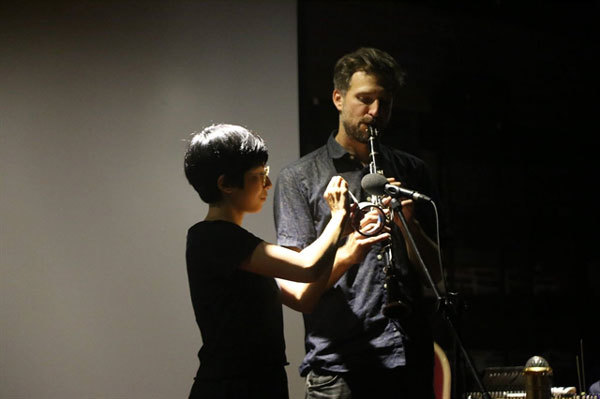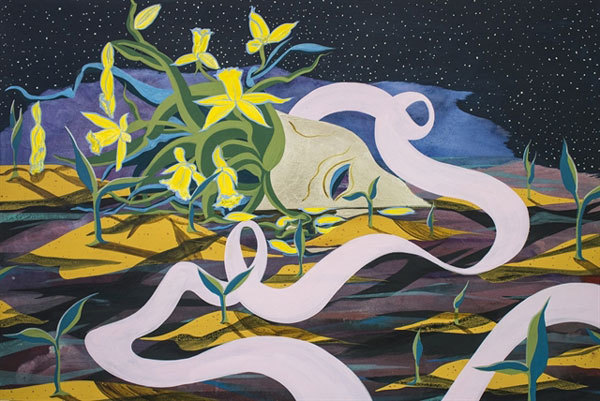Associate Professor Bui Quang Thang, who also has a doctorate in sociology, culture and art, was invited to be the art director of the centre. He spoke about VICAS Art Studio.
 |
| Bui Quang Thang, art director at Centre for Contemporary Art Support and Development. Photo courtesy of the VICAS Art Studio |
Could you tell us about the origins of VICAS Art Studio?
A few years ago, VICAS wanted a contemporary art centre and it got approval to set up the centre from Culture, Sports and Tourism Minister Nguyen Ngoc Thien in 2017.
Its official name is the Centre for Contemporary Art Support and Development and the short name is VICAS Art Studio. This is the first State-owned contemporary art centre in Vietnam.
The centre was born with the desire to connect contemporary artists with the public and to encourage supporting contemporary artists. We hope the centre will have some social impact with its activities.
What does the centre do?
We have been operating since November 2017, up to now 27 months. The main activity is organising art exhibitions with an average of one exhibition per month.
In addition, the centre also holds art workshops, talk shows and training courses on art history and contemporary art for artists and the public. Plus, we work with international art organisations to organise exhibitions and have artist exchange programmes.
How do you select artists to hold exhibitions at the centre?
The centre's aim is supporting and developing contemporary art. But there are different ideas about what contemporary art is. I'm a curator and I need to have my own perspective not too far away from the artists and the public. My opinion is not conservative in line with current international tendencies.
Therefore, I have given two fairly specific criteria when selecting artists. Firstly, the artwork needs to be contemporary with a personal impression. Secondly, the centre will prioritise to young and talented artists who aren't well-known.
What is the difference between VICAS Art Studio and other centres?
Administratively, the centres all run the same way. They have to get a licence from the management body. I think the difference is from an artistic standpoint that depends on the curator.
The director of VICAS trusts me and assigns the curatorial work to me. I don't have to attend meetings, make reports or seek advice from anybody.
The centre is State-owned but it is not funded by the State. Normally, other State-owned centres have to do publicity work such as exhibitions to celebrate events. But the studio's main work is studying, looking for and supporting contemporary artists and new trends.
We try to seek talented artists. Some of the talented artists are not known for various reasons. Regardless of who are they and where they are we try to meet them and see their paintings. If their paintings are good enough we will support them to hold an exhibition.
What are the strength and weakness of the centre?
The biggest strength is that we have facilities for exhibitions and seminars. We can support artists to organise exhibitions. As I understand it, an artist would have to pay about VND50 million (US$2,100) for an exhibition hall for 10 days elsewhere. This is a large amount of money for a young artist.
Artists invited to display work at our centre don't have to pay this amount. They just spend a minimum fee to print introduction flyers and pay for exhibit protection.
We get support from the artists, media and collectors. Many artists donate their paintings for fundraising and some others donate cash. We use these donations to support young artists.
About 25 per cent of painting sales go towards funding the centre.
Labour force is our biggest difficulty. The studio has four people, two paid by VICAS. The rest, including me, are contributors and get very small payments.
We have to compete to build our own brand. The competition here is the difference in artistic tendency. Even if we can't sell paintings we can still hold exhibitions because it is part of the purpose of the centre.
We want to connect the public to new artistic trends. It is great to welcome the public and it wonderful if any paintings sold. We have a desire to sell paintings and change the tastes of the public. VNS
Nguyen Binh

Residency programme to combine contemporary music, heritage
Five emerging artists or groups will have the chance to engage with traditional disciplines of Vietnamese performing arts and music via a residency programme which will start on March 1.

Duo exhibition showcases new works by young artists
Two young artists Tammy Nguyen and Pham Ha Ninh, both of whom studied art in the US, will showcase their latest paintings at the exhibition Necessary Fictions at the Factory Contemporary Arts Centre.A1.
 Set up by the Vietnam National Institute of Culture and Arts Studies (VICAS), the Centre for Contemporary Art Support and Development (VICAS Art Studio) is one of the first State-owned art spaces in Vietnam.
Set up by the Vietnam National Institute of Culture and Arts Studies (VICAS), the Centre for Contemporary Art Support and Development (VICAS Art Studio) is one of the first State-owned art spaces in Vietnam.